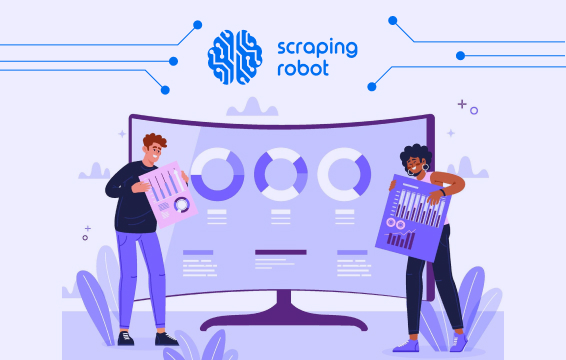Competitor Analysis Data: What It Is And How To Use It

I’ve never really thought of myself as a competitive person. I was good at the sports I played in high school, but I was more interested in having fun than competing. In high school, this directly affected the way I thought about myself on the track. I was there to have fun, do well and improve my skill, and I understood that some people were going to do these things better than I could. But that all changed when she showed up. The long-legged freshman who blew me, an upperclassman, out of the water on the very first day. Until she showed up, the only people I had to worry about were my opponents, and I did a pretty good job of holding my own against them. Until she showed up, I didn’t know what it meant to compete.
Today, she is one of my best friends. I attribute this partly to those lessons she taught me about competition–not just beating your opponents, but outsmarting them. Not just showing up to win on race day, but winning every day at practice, too. Like I said, these lessons we learn growing up directly translate to the way we work as adults. But what if you don’t know where to start? Lucky for you, there are resources that make analyzing your competition easy and efficient. Data scraping is one way you can do that, which is why I want to talk about the importance of implementing competitor analysis data into your personal and professional goals.
Table of Contents
What is Data Scraping for Competitor Analysis Data?

Data scraping is the process of automatically gathering data from websites with the help of a bot. Scraping bots are programmed to parse through a website’s HTML files and collect only the data you’re looking for on that page. Humans can collect data in this way, too, but it takes a long time, especially if you’re hoping to scrape very large volumes of data, which is true for many of our customers who scrape for business and marketing purposes.
If a human tried to perform this same style of scraping, that human would probably get banned very quickly from websites and social media platforms that don’t like bots analyzing their pages. Once that person’s IP address is banned from the website, they’re out of luck. Scraping bots are programmed to use as many IP addresses as possible (with the help of proxy providers) to get the job done quickly and efficiently without ceasing your scraping process. This is great news for business people who want to scrape data to help them gain insight into the market, their consumers, or their competitors. Competitor web analysis is a great way to figure out what your competitors are doing and how it’s serving them. From there, you can decide what practices you need to remove, implement or change in your own business.
What Are Good Sources of Data for Competitor Analysis?

There are many great data sources for competitor analysis. Here are a few common places our customers find the most useful data.
Social media pages
Your competitors’ social media pages are a great place to start conducting competitor web analysis. Social media pages tell us a lot about individuals, like what they enjoy, who their friends are and where they went on vacation last summer. But social media pages tell us a lot about organizations and businesses, too. A quick look at your competitors’ page can tell you how many followers they have, what they’re posting and how often they’re posting about it. But what if you want more in-depth information about their social media practices? Or, at least, what if you want a higher volume of this information that can help you convince your team to try something new? When you use scraping bots to help you gather these insights from social media, you can find out a lot more about your competitors than if you sat down and simply recorded it yourself. For example, maybe you’re looking for more information on the reactions customers have to these posts. With a data scraper, you can not only collect these comments, but you can also see how many times people gave the post a certain reaction.
These insights are fun, but they’re also so useful! If you can understand what your competitors’ audience are saying, you can have a better understanding of your own position and what you can do to improve it. Another way this is possible is through analyzing your competitors’ social media followers. A data scraping bot can collect data on the people your competitors are following and who’s following them, which can give you great insights on your own followers and ideas on how to improve your engagement.
Pricing pages
If you’re an online shopper like me, price is probably one of the biggest determining factors for your purchases. In fact, I almost never scroll through a product page until I’ve sorted the results by price from high to low. Since price is such a big deal for most customers, you can use a data scraper to gather valuable information on the prices of your competitors’ products. Sure, you could visit your competitors’ pages and see the prices they offer for each individual product, but scraping bots generate this information automatically. Depending on how many scrapes you want to use, you can get real-time data that can help you better understand your competitors’ pricing strategies.
With today’s cultural focus on online shopping, this competitor analysis data can give you a real advantage over not only competitors in your region, but also all over the world. We can access eCommerce companies easily online, so the competition for best price only increases. Data scraping bots give you access to a high volume of pricing data, which can give you ideas on when your competitors are running certain sales, how often they run these sales and how these promotions impact your own strategy. When you have data on your competitors’ prices, you can make data-based decisions on how to change your own prices, or how to market them more clearly and effectively to your audience.
Customer reviews
Similar to the way you would analyze data from social media, you can also get a feel for what customers are saying about your competitors by scraping customer review pages. This is especially useful for finding negative reviews and reactions, since some companies might block these kinds of reactions from showing up on their social media pages. Analyzing third-party review pages can give you an even better idea of the honest perception that people have about your competitors, the market and your own business.
How do you perform competitor analysis using big data?

Like I said before, you could probably find some of this information yourself by manually checking social media pages, eCommerce websites and customer review websites. However, if you’re working with high volumes of competitor analysis data, you’re going to need a tool that can do this much more quickly and efficiently. That’s where scraping bots come in. Not only can they perform this work automatically, but they can also do it in a way that’s easy to set up, use and analyze.
Using a scraping bot is easy, especially if you can find the right one that fits your personal and professional needs. Several scraping companies offer pre-made modules for certain websites. But you can also develop custom scraping projects and scrape any website on the internet for valuable data. Once you have this data, you can use the easy-to-understand key points to identify opportunities for growth in your own business. If you try to enter the competition without an idea of where you stand, you’re probably not going to get very far. In high school, I competed in every varsity race until she showed up. Then, I had to take a step back and re-analyze the way I thought about my competition. When she started out-competing me in practice and taking my spot in those races, I knew something had to change. This kind of analysis can lead to similar changes in your own organization, but the only difference is that the changes you make will be based on real data. You can’t solve a problem if you don’t know what that problem is, right?
What is a good web competitor analysis tool?

In case you didn’t guess already, Scraping Robot is the bot for the job. Not only do we offer sign-ups at no charge, but we also offer 5000 free scrapes per month. If you’re still figuring out the best way to use competitor analysis data in your strategy, those free scrapes are a great tool to help you navigate the tool and get a feel for what it can do for you. Plus, you can test out our demo pages for our valuable modules, even without setting up an account.
Not only do we offer pre-made modules to help you gather relevant data from sites like Amazon and Google, but we also offer customizable scraping solutions to better fit your needs. We recently implemented our own API feature, which allows you to gather real-time data from HTML, instead of having to perform hundreds of scrapes in a row. And the best part is, we can do all of this for incredibly low prices.
Final Thoughts
We hope you can see why using web scraping competitor analysis data can be such a good idea for you and your company. Not only can it help you get a better understanding for the audiences your competitors are targeting, but it can also give you insights and ideas for ways you can better target your own customers, too. Just like high school track, understanding the competition is imperative to your success. But unlike high school track, these data-based results can increase revenue, grow your company and help you reach your goals more quickly and efficiently than you thought possible. We can’t wait to help you reach these goals when you join the Scraping Robot team.
The information contained within this article, including information posted by official staff, guest-submitted material, message board postings, or other third-party material is presented solely for the purposes of education and furtherance of the knowledge of the reader. All trademarks used in this publication are hereby acknowledged as the property of their respective owners.
Some Biographical Info
